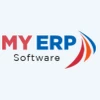Big Bang Versus Phased ERP Implementation Strategies: Which is Better?

An Enterprise Resource Planning (ERP) system combines different software modules for various business processes like accounting, inventory and warehousing, manufacturing, distribution, and sales into a single computing device. An ERP system is instrumental in ensuring smooth business functioning & growth.
However, it is equally necessary that all ERP implementation steps, including initial analysis, design, deployment, testing, training, and support, are done properly. This will help ease the software’s easy adoption across different departments, streamlined processes, and higher ROI.
What are the different approaches of ERP implementation?
There are three different approaches to ERP implementation. big bang, phased, and parallel. Each approach has its own advantages and disadvantages. Let’s find out what is the best ERP adoption approach for your company.
Big Bang ERP Implementation Vs Phased ERP Implementation
Each strategy of ERP implementation has certain advantages and risks. What works best for an organization depends on its available resources and expectations from the software.
Two of the most common strategies for ERP implementation are – Big Bang and Phased Implementation. However, businesses can also combine these two implementation styles, choosing to go for a big bang strategy for smaller units and using the phased implementation approach for larger units.
Under the big bang ERP implementation strategy, a business shifts to the new ERP system in one go. All the modules and other changes go live simultaneously across departments.
Whereas in phased ERP implementation, each phase of the project goes live at a separate time. Hence, older systems are replaced based on factors like business unit (HR, logistics, finance, and others), module, location of facilities/ offices, among others.
Big bang implementation is best suited when an organization needs ERP implementation for few functional areas. The phased ERP process works better for deploying the software in a larger setup.
If implemented correctly, the big bang approach is faster and less expensive, but it is quite risky. The training has to be completed by the launch date. If not, productivity can drop. The implementation process is spread over a longer span in the phased ERP strategy, but it is more practical. Employees get more time to adapt and adjust.
Try Out: ERP Software | Retail ERP Software | Manufacturing ERP Software
What is Phased ERP Implementation Approach?
In Phased Approach for ERP Implementation, each phase of the project goes live at a separate time. Hence, older systems are replaced based on factors like business unit (HR, logistics, finance, and others), module, location of facilities/ offices, among others.
Advantages & Disadvantages of Phased ERP Implementation
Proper configuration, testing and data validation are crucial to resolving any bottleneck in software adoption before the ERP goes live. In addition, a proper data recovery plan is necessary so that the work is not lost in case the entire system crashes after the Big Bang implementation.
In the phased ERP approach, it is easier to test and validate as the bits are smaller. This means employees, business partners, and customers face no issues.
Pros of Phased ERP Implementation Approach
Better usability and adoption of ERP system: Employees get enough time to learn and adapt to the ERP software in a phased manner.
Vulnerabilities can be fixed quickly: Implementing smaller chunks helps identify issues and fix them before they turn into a problem. Phased ERP implementation approach is better than figuring out where the problem lies in the complete project after its launch.
Lower risk: Teams can assess, analyze, and optimize each module and improve efficiency when the project is still ongoing. If the entire budget is spent at once and it turns out to be a disaster, it puts a huge burden on the business.
Streamlined process: The workload is spread out in phases, making it easier to streamline the deployment of tools, features, and components. Lesser internal resources are needed for the completion of each phase.
Cons of Phased Approach for ERP Implementation
Longer process: More time is needed for the phased ERP implementation and testing, resulting in the delayed ROI.
More money: The investment is higher. The company must use the old and new systems simultaneously, as they must be bridged for data migration. There are chances of overlapping or sunk costs in each phase.
Co-dependency: It is not feasible to split a solution into several phases if a co-dependency exists between the functional areas or modules.
How to Increase User Adoption With Phased ERP Implementation Approach?
User Adoption is easier with a phased ERP implementation process. Employees may not have the required technical expertise to understand the system if features are implemented at once.
If the entire ERP module is implemented at once, it will take more time to train employees. Otherwise, it will create higher chances of confusion due to poor comprehension.
While starting with a new ERP system, every employee takes a different amount of time to adjust to the new user interface and workflow.
However, it is important to follow a phased and timed approach. The employees can better understand the system’s value in reducing their workload and provide feedback on improvement in productivity.
5 Stages to Increase User Adoption with Phased ERP Implementation Strategy

The process starts long before finalizing the ERP software and continues even after the rollout in a phased implementation. It can cover weeks, months, or even years.
Stage 1: Planning well in advance
Project members should research and understand the requirements to solve the problems existing in the current system. Then, dedicate enough time to prepare an ERP implementation plan that can fulfil the needs of everyone and is simplest to adopt.
Employees should be assigned different tasks such as issuing requests for proposals, choosing the potential vendors and ERP systems, and other tasks during the implementation.
Stage 2: Designing
Team members decide what features are of utmost importance and how they can incorporate them. The team may decide to customize the ERP software or add modules to the existing solution. The most effective way of data migration without disturbing the business operations is also determined.
Various factors are taken into consideration while planning ERP implementation to modify existing workflows. For example, the team can create specialized interfaces to manage the integration between the old and new ERP system so that critical functionalities are not affected in migration.
Further, the project team can define standard operating procedures (SOPs) and the workflow during the transition period.
Stage 3: Development and testing
The ERP vendor and in-house project team that includes members having different expertise work together at this stage. The software is configured according to the needs after proper discussion. Data migration, documentation, preparing training resources, and other activities are done during this phase.
In a phased ERP implementation, the timeline must be set after considering core processes like financials, inventory, database, reporting, sales, etc. After the successful first phase, the integration planning is done for purchase, advanced warehouse management, advanced analytics, CRM, and other systems in the successive phases.
If the transition is from an on-premise ERP system to a cloud-hosted or hybrid software, multiple factors like connectivity, security, maintenance should be considered. After building the ERP, test the system with all potential use cases. This may take time but will save the struggle involved if the employees face it after deployment.
Stage 4: Deployment
After building the software and adding it as a part of your organization’s IT system, give it to your employees for use. If employees face difficulties, train them, and assess the department-wise productivity growth.
Stage 5: Support
It is the task of project teams to troubleshoot any problems that arise and upgrade systems from time to time. For an on-premises ERP, the IT team needs to work on maintenance, patching, and more. However, for a cloud ERP software like BizNext, the vendor does most of the work.
How to Achieve Higher ROI with Phased Implementation of BizNext ERP?
BizNext ERP enables every department within an organization to collaborate and perform tasks successfully. BizNext experts help in the phased implementation of the software across different business functions. Also, the integration with existing systems and the deployment of standalone modules are easier with BizNext ERP.
All types of business resources, be it man, machine or material, can be streamlined towards successful ERP adoption. The software provider brings transparency to the process and helps in defining the process and policy for successful software enforcement.
Conclusion
Choosing the right ERP implementation approach is as important as understanding the features and functionalities must be present in the ERP software.
Companies need to think about the right time to implement, the duration of the project, and the risks involved to be successful. Phased ERP implementation is the safer and better approach for most complicated projects.
Ayushee is currently pursuing MBA Business Analytics from SCMHRD, Pune with a strong background in Electronics and Communication Engineering from IGDTUW. She has 2 plus years of full-time work experience as an SEO content writer and a Technology Journalist with a keen interest the amalgamation of business and... Read more




























